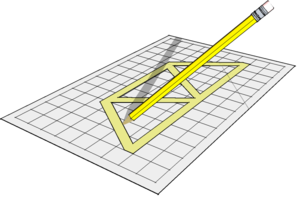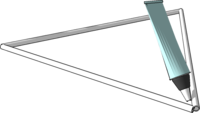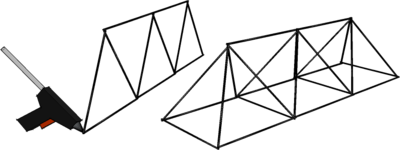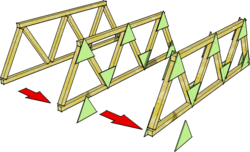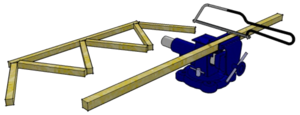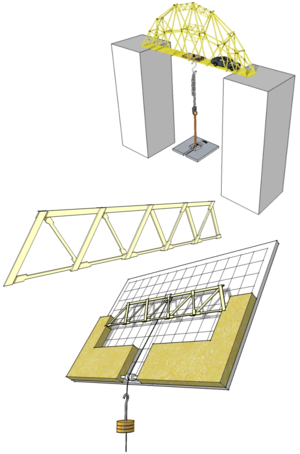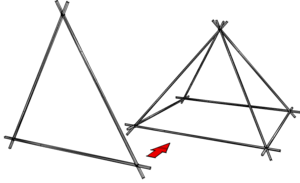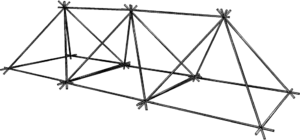Truss Bridge Models
From DT Online
Introduction
Models can be made out of construction kits such as Meccano or a wide range of easy to use materials including art straws, strip wood, garden canes, rolled paper, balsa wood, uncooked spaghetti - and even people!
Activity
Building a scale model of a truss bridge then testing it is an excellent way of learning something about how the structures work - and can be great fun!
Start by making a scale drawing of the bridge truss or frame you wish to model. Using squared paper or graph paper will help to keep the drawing accurate.
Alternatively, the design can be produced on a computer using CAD software then printed out.
The drawing will be used to cut members to size.
If it is also used to locate the members as they are glued together, you may wish to cover the drawing with tracing paper or greaseproof paper to stop glue sticking to it - alternatively, rub soap or wax on to the drawing around each joint location.
Art straws, card, rolled paper and bare wood may be glued with P.V.A. wood glue. Other materials such as spaghetti, or any material with a non-porous surface, may have to use a solvent-based adhesive, such as balsa cement, or a glue gun.
Safety Point!
- Fumes from solvent-based adhesives are probably dangerous to inhale and may be highly inflammable!
- Glue guns work by melting hot plastics and so may cause sever burns!
- Children should use these only with strict teacher supervision!
Models for Display
Strips of softwood, 6mm or 8mm square and reinforced with thin card gusset at each joint, is a useful material from which to make model frame structures.
- Lay the stripwood over the drawing to mark lengths to cut.
- Hold the wood securely using either a small Bench Hook or a vice
- Cut strips to length using a junior Hacksaw and cut close to where the wood is held - e.g. close to the side of the vice.
- Cut out of thin card some equilateral triangles - about 30mm length of side.
- Glue these to each side of each joint to make a really strong frame.
- Several frames can be joined together to complete the model
- Thicker card used to create roadways or decking for example.
Note: Use a junior hacksaw with a metal cutting blade. This may seem odd but they have finer teeth and are therefore less likely to jam against the edge of a thin strip of wood. They are also safe to use against the edge of a small metal vice which is the easiest way to hold the work. Saw downwards and position the work such that the marked line is on your side of the saw blade - so you can see it!
Safety Point! Use a safety Cutting Mat and a metal safety rule when using a modelling knife or scalpel
Models for Testing
Structures made from stripwod reinforced with card triangles can be very strong indeed - and difficult to test because it could take a dangerously large weight to break them!
More suitable alternatives are either to use uncooked spaghetti or to build the model from flat strips of balsa wood - e.g. cut from 3mm thick sheet.
Balsa wood is also quite easily cut and shaped to achieve a more efficient design. Ties might be made thinner than struts for example and left wider near the joints where a greater gluing area might be needed.
Once completed, test your model by dividing its breaking load by its self-weight using the same units - you should aim for a result between 1000 and 2000!
Use a piece of card or short length of scrap wood to spread the load where it is attached to your model and, to test a single flat frame, you could construct a test rig as shown.
Large Scale Models
Models of structures large enough to walk inside and bridges long enough to span across a classroom can be built using garden canes, card tubes (e.g. from inside carpet rolls) and even people! - see the human cantilever model used by Benjamin Baker, one of the designers of the Forth Bridge, as a demonstration for a Royal Institution lecture at the time of the bridge construction.
One method is to lash together metre long lengths of split bamboo, or 'flower sticks'. An effective way of doing this is to use elastic bands - simply hook the elastic band round one end of a cane then keep it stretched tight as it is wrapped around the canes forming the joint.
First build triangles then link these together to form larger structures - a bridge across a classroom or a pyramid to walk inside is easily achieved.
Even larger models can be built similarly by binding together long lengths of card tube, plastics pipe or lengths of timber using cable ties, gaffer tape, duct tape or similar.
- Structures and Frames can also be modelled using the Construction Kits listed in the Truss Bridges and Looking at Bridges articles.
Safety Point! Take great care with hot glue guns and all hot-melt glues. The melted glue can stick to the skin and cause severe burns.
 |
 |
 |
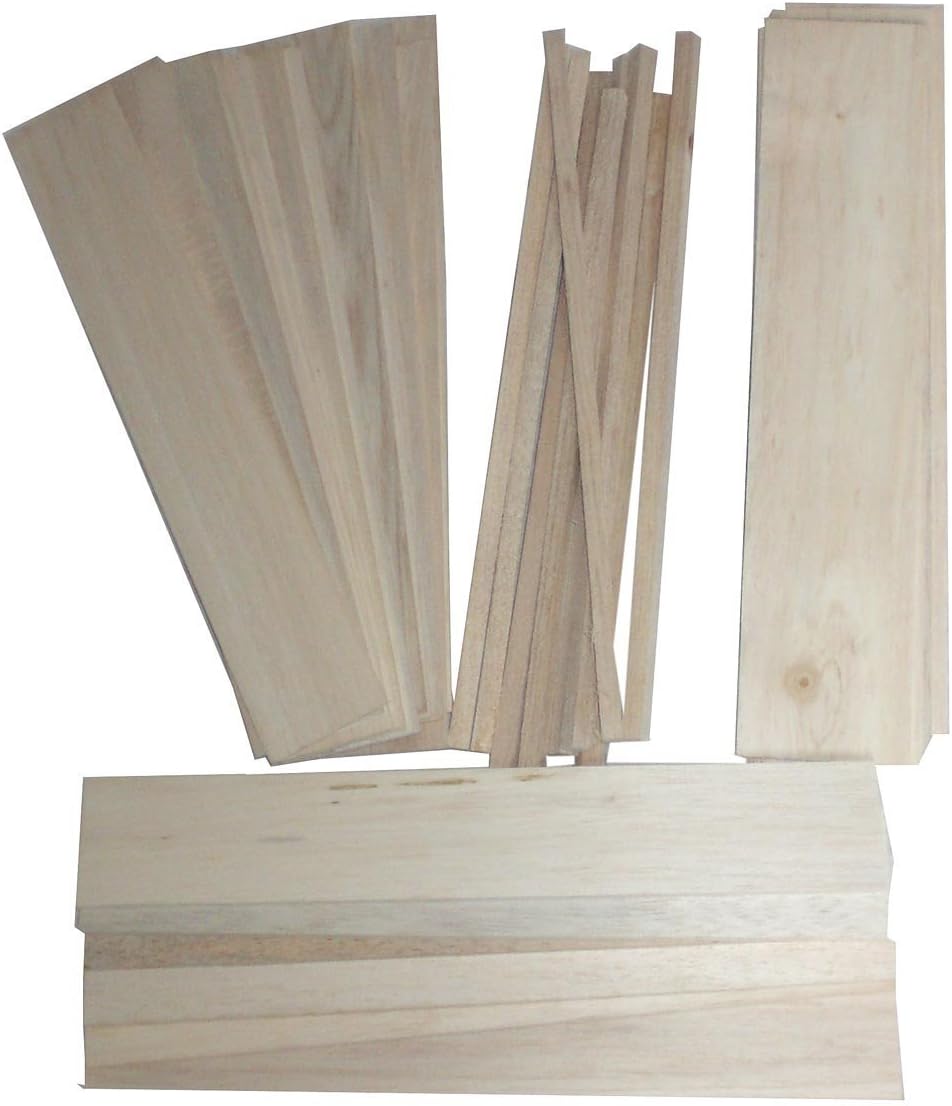 |
 |
 |
 |
 |
 |
 |
 |
| Junior Hacksaw |
Clamp-on Hobby Vice |
Stripwood |
Balsa Wood |
Medium card coloured |
Thick card coloured |
Cutting Mat |
10mm Squared Paper |
PVA glue |
Glue Gun |
Bamboo Flower Sticks |
Notes:
- Choose metal cutting hacksaw blades - the teeth are small which suits this scale of work and they are safer for young children
- School PVA glue is best for young children because it is non-toxic and washes off : PVA Wood Glue is strongest but must be used with care.
- Try to get natural Flower Sticks or wear gloves because the green stain comes off on hands!

